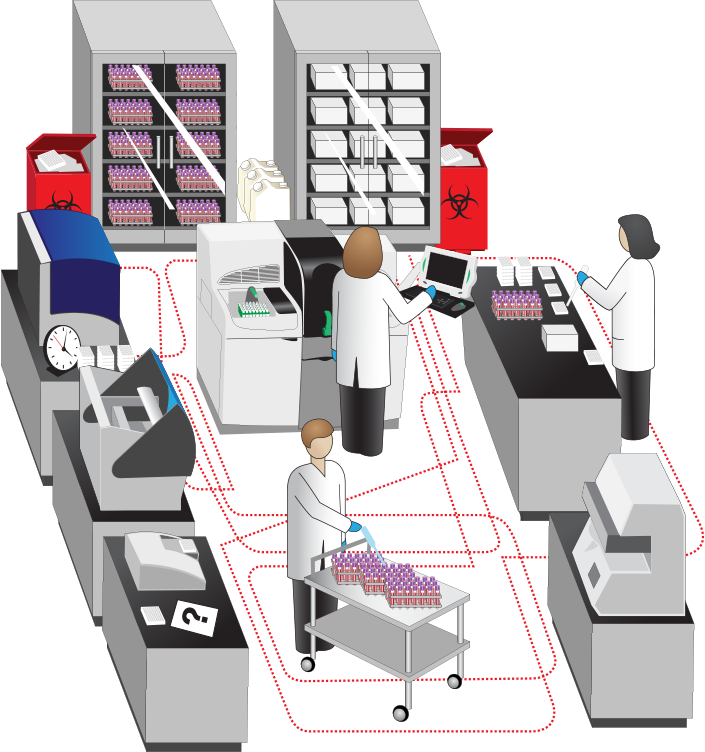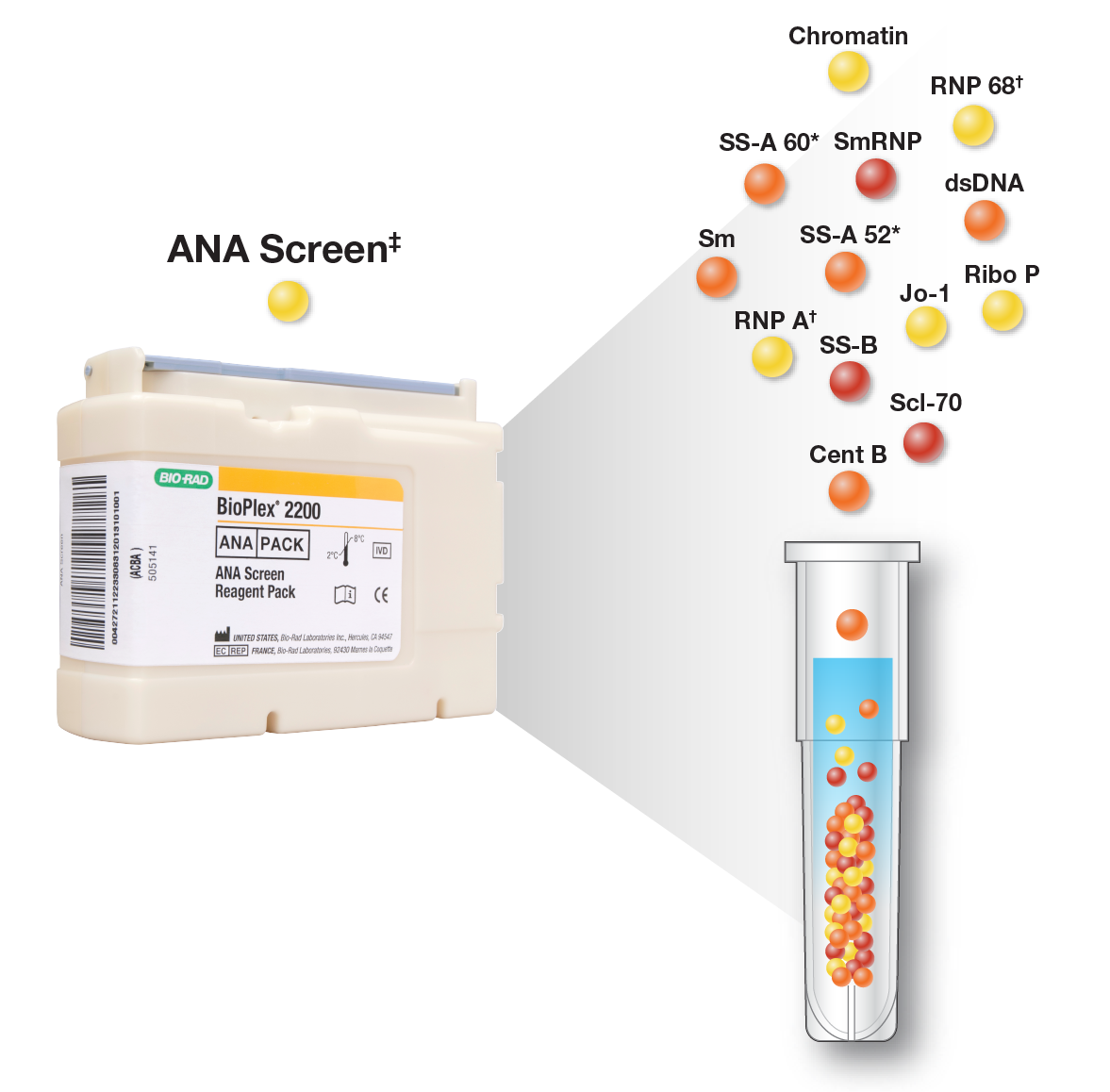Multiplexing Reduces Testing Processes
Clinical laboratory personnel utilize a wide array of different test methods that require diverse processes related to patient testing. These include assay processing, patient sample handling, reagent management, analyzer maintenance, assay calibration, and quality control procedures. Each test method requires varying degrees of hands-on time.

Multiple Platforms

Single BioPlex 2200 System
Testing complexity increases when test panels and reflex testing algorithms are processed. These require meticulous management of patient samples, test results, and subsequent test orders. Human errors are inevitable, resulting in costly retesting that compounds existing workloads.
Multiplex technology can help clinical laboratories simplify and streamline testing processes by reducing the number of individual tests, calibrations, and QC runs performed. In addition, fewer analyzers are needed to perform testing, and the risk of testing failures and subsequent retesting is substantially mitigated.
Fewer Individual Tests
By producing multiple results from a single test, multiplexing helps reduce the number of individual tests performed. Test processing, sample handling, and reagent management are all minimized. Technologists can perform multi-test panels, which can be completed in a single test, instead of multiple individual tests. This saves significant hands-on time and lets technologists turn their attention to more crucial laboratory tasks.
Additionally, multiplexing can enhance the efficiency of reflexive algorithm testing. Single-analyte test methods may require technologists to manage algorithm results, sequester patient samples, and process individual reflex tests sequentially. By producing algorithm results with a single test, multiplexing eliminates numerous testing processes.
Fewer Analyzers
Unlike traditional single-analyte reagents, multiplexed reagent packs can include many different tests. This vastly expands the onboard test capability and capacity of the analyzer, allowing it to perform more diverse testing and generate more results without the need for multiple analyzers. Managing fewer analyzers leads to improved laboratory efficiency. Moreover, the expanded test capacity means that reagents and consumable supplies must be replenished far less frequently.
Fewer QC and Calibration Runs
Multiplexed test panels can greatly reduce the time and effort required for calibration and quality control processes. Unlike traditional testing methods, in which each individual test requires its own calibration and quality control processes, multiplexed test panels need only one calibration and control process for multiple tests. By eliminating redundant processes, technologist testing efficiency is improved.
Reduced Retesting After Testing Failures
With the BioPlex 2200 System, integrated QC is processed with every patient sample. Unlike traditional QC, which would detect testing errors later in the process, integrated QC provides immediate awareness of potential testing errors. By detecting errors early, multiplexing with integrated QC helps reduce the risk of testing failures that require labor-intensive retesting, helping to further reduce unnecessary processes.
Multiplexing Improves Productivity
Clinical laboratories face significant challenges to meet clinicians’ expectations for result turnaround time. Timely test results are essential to help clinicians make critical patient care decisions, intensifying the pressure on laboratories to deliver rapid results. The shortage of medical laboratory scientists compounds these challenges, making it more difficult to process tests efficiently. While conventional automation technologies can help address these challenges, multiplexing is a transformative automation solution that significantly increases result throughput while alleviating testing demands on limited staffing resources.
-
Increased Result Throughput
By generating multiple results from a single test, multiplexing can yield significantly higher result throughput than single-analyte testing. Consider the BioPlex 2200 ANA Panel, which produces up to 14 results (up to 12 results in the U.S.) with a single test. By increasing result throughput without increasing testing processes, the BioPlex 2200 helps technologists optimize efficiency and productivity. Result turnround time is significantly improved, allowing clinicians to diagnose patients and begin treatments quickly.
-
BioPlex 2200 ANA Screen Panel
1 Test = 14 Individual Results
* SS-A 52 and SS-A 60 are a composite result in the U.S.
† RNP A and RNP 68 are a composite result in the U.S.
‡ Composite result
Multiplex Technology: The Next Level of Automation
As clinical laboratories contend with increasing workloads and staffing shortages, advanced automation technologies are needed to meet the testing demands of the future. Multiplexing is a transformative automation solution that minimizes labor-intensive testing processes while maximizing laboratory productivity.
With multiplex technology, laboratories can produce more results with fewer tests, fewer QC and calibration runs, and fewer analyzers. This adds up to reduced labor costs and more efficient staff utilization. Laboratories can streamline workflow efficiencies, reduce costly retesting, and improve result throughput and turnaround time, helping clinicians provide the best possible patient care.




